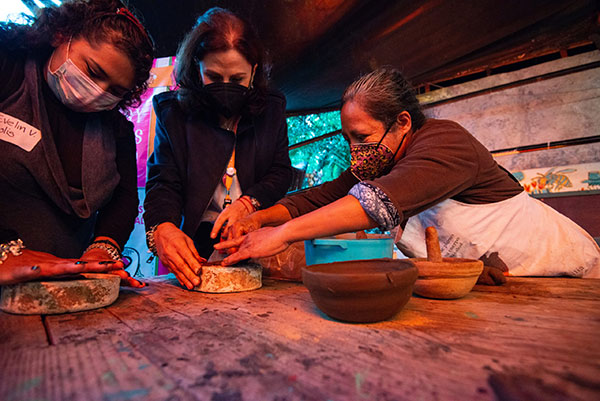Assessment of Blood Lead Levels in Children in Poti, Georgia: A Pilot Study of Environmental Lead Exposure Sources


In 2023, Pure Earth researchers worked with the National Center for Disease Control and Public Health of Georgia to conduct an analysis of blood lead levels of 63 children aged 2-7 and home based assessments in 50 households in Poti, Georgia to analyze potential sources of lead exposure. This follows a 2018 national survey which estimated that more than 40% of children aged 2-7 years had a blood lead concentration of more than the action level of 5 µg dL.
Background
In Georgia, a 2018 national survey estimated that more than 40% of children aged 2-7 years had a blood lead concentration of more than the action level of 5 µg dL. In 2019, the National Center for Disease Control and Public Health in collaboration with UK Health Security Agency and British Geological Survey, designed a proof of principal study with the purpose of documenting the feasibility of employing lead isotope ratios (LIR) to identify and rank the Pb(lead) exposure sources most relevant to children across Georgia. A cross-sectional survey conducted between November 2019 and February 2020 enabled us to identify 36 children from seven regions of Georgia with a blood lead concentration of more than 5 µg dL . These households were visited to allow collection of blood and a total of 528 environmental samples, a questionnaire on behaviors were executed to inform on the potential lead exposures.
LIR in blood and in environmental samples were determined and their relationships analyzed for each individual child, and across the whole group to ascertain clustering of Pb environmental sources contributing to BLL values. Analyses of the environmental samples were able to identify several sources where lead levels exceeded National reference values (spices, paint, and soil). At the individual level, LIR analyses found likely contributions to blood LIR from spices, soil and dust. Cluster analysis of LIR values found BLL clustering most closely with spices, tea, and paint, then to a lesser degree sand, dust and soil, and lastly milk, toys, pens, flour/corn and water. Analyses of LIRs provided an indication and ranking of importance of Pb
environmental sources as explanatory factors for elevated BLL across this group of children. Although the findings support deployment of interventions aimed at managing the priority sources of exposure in this population, this was a proof of principal study in a targeted population of children with known elevated BLL above the action level. The need for evidence from a representative sample of Georgian population(s) is evident.
Study Objective
The primary aim of the study was to address and rank environmental sources of lead in a sample of children using lead concentration and lead isotope ratios, based on the laboratory methods developed and validated within the previous study. Secondly, we aimed to strengthen the NCDC capacities and capabilities for environmental epidemiology and environmental Pb measurements, through training of personnel and inter-laboratory comparisons. We also aimed to compare BLC the of children to the previous estimates for the same region from the National Multiple Indicator Cluster Survey (MICS) a Nationally representative sample of children aged 2-7 years that included BLL (n=1578), taking into account all public health interventions implemented from 2019 till 2023.
Study Methods
The study included 50 households from Poti, with children aged 2 to 7 years old. Where households had >1 child in this age group, consent was sought for each child to be included. During the children selection we took into consideration that these 50 households come from all zones of Poti.
Findings
Study results are forthcoming and will be published in 2025.



